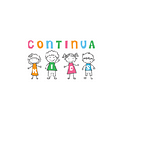Understanding ABA Therapy: A Comprehensive Guide
Applied Behavior Analysis (ABA) therapy is widely recognized as one of the best autism treatments in India for children with Autism Spectrum Disorder (ASD). It has been successful in improving communication, social, and behavioral skills in children with ASD. In this comprehensive guide, we will explore what ABA therapy is, how it works, and its benefits for children with ASD.
What is ABA Therapy?
ABA therapy is a type of behavioral therapy that focuses on modifying and improving behavior through positive reinforcement. The therapy is based on the principles of behaviorism, which is the idea that behavior can be learned, modified, and shaped through environmental factors.
History of ABA Therapy
ABA therapy was first introduced in the 1960s by Dr. O. Ivar Lovaas, a psychologist who was interested in understanding and treating the behavior of children with ASD. His groundbreaking study on early intensive behavioral intervention for children with ASD, published in 1987, demonstrated that ABA therapy could improve cognitive and language skills in children with ASD.
How Does ABA Therapy Work?
ABA therapy works by breaking down complex behavior into smaller, more manageable components, and then reinforcing positive behavior through a system of rewards. In Delhi, there are many qualified and experienced ABA therapists who can help children with Autism Spectrum Disorder (ASD). The therapist first assesses the child’s behavior and identifies specific areas for improvement. Then, they create a personalized treatment plan that focuses on the child’s specific needs and goals. The therapist, such as an ABA therapist in Delhi, will then work one-on-one with the child, using a variety of techniques such as modeling, shaping, and prompting, to teach new skills or modify existing ones. The therapist will provide positive reinforcement when the child exhibits the desired behavior, which may include verbal praise, tokens, or other rewards.
Types of ABA Therapy
There are several types of ABA therapy, including:
Discrete Trial Training (DTT)
DTT is a highly structured form of ABA therapy that involves breaking down a specific skill into small, discrete steps. The therapist will teach the child each step one at a time, providing reinforcement for correct responses.
Naturalistic Teaching
Naturalistic teaching involves teaching skills in a natural environment, such as at home or in the community. The therapist will use play-based activities to encourage the child to engage in social interactions and learn new skills.
Verbal Behavior Therapy (VBT)
VBT focuses on improving communication and language skills by teaching the child to associate words with their meanings. The therapist will use a variety of techniques, such as imitation, prompting, and reinforcement, to teach the child to use language to communicate their wants and needs.
Benefits of ABA Therapy
ABA therapy has been shown to have several benefits for children with ASD, including:
- Improved communication and language skills
- Increased social skills and peer interactions
- Decreased problem behaviors
- Increased independence and self-care skills
- Improved academic performance
Criticisms of ABA Therapy
Despite its widespread use and success, ABA therapy has been subject to some criticisms. One criticism is that it can be too rigid and focused on compliance rather than individual needs. Another criticism is that it can be too focused on eliminating problem behaviors rather than teaching positive skills.
Conclusion
ABA therapy is a highly effective form of intervention for children with ASD. It is based on the principles of behaviorism and uses positive reinforcement to modify and improve behavior. There are several types of ABA therapy, including DTT, naturalistic teaching, and VBT. ABA therapy has been shown to have several benefits for children with ASD, including improved communication and social skills, decreased problem behaviors, and increased independence.
FAQs
What age group is ABA therapy suitable for?
- ABA therapy can be used for children of all ages, but it is most effective when started early.
How long does ABA therapy usually last?
- The duration of ABA therapy varies depending on the individual needs of the child. It can range from a few months to several years.
What is the role of parents in ABA therapy?
- Parents play an important role in ABA therapy. They work closely with the therapist to ensure that the child is receiving consistent reinforcement and support at home.
Can ABA therapy be harmful to children?
- ABA therapy, when conducted by a qualified and experienced therapist, is considered safe and effective. However, it is important to ensure that the therapist is following ethical guidelines and that the therapy is tailored to the individual needs of the child.
Is ABA therapy covered by insurance?
- ABA therapy is often covered by insurance, but the extent of coverage may vary depending on the insurance plan. It is important to check with the insurance provider to determine the coverage options.
